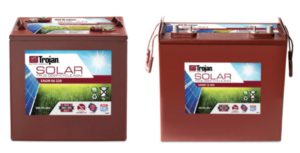Ever heard of C-Max™ technology? We’ll delve deeper into it in a minute, but here’s what you need to know: it’s a great example of how Trojan Battery is pushing ahead and developing technologies that make batteries perform more consistently and with more durability. To get a quote and learn more, reach out to our team.

Trojan’s new promotional campaign for Reliant AGM is “All You Need is Life,” to emphasize the line’s long life and reliable performance. The non-spillable, maintenance-free batteries focus on sustained performance versus high peak capacity you usually focused on by other manufactureres. Market demands are growing, and with features like C-Max technology, these batteries help hit the high watermark.
Check out these C-Max technology features, and learn more about Trojan Reliant AGM batteries:
Proprietary Paste Formula
Paste features elements designed to address the unique needs of deep-cycle applications.
Why it’s important: Helps to maximize continual performance, and increase total energy.
Unique Separator Composition
A thick design ensures high compression for effective contact between glass mat and plates.
Why it’s important: Helps protect against stratification for extended battery life.
Plastic Polymer Case Design
Distinct plastic polymer case formula with reinforced case end walls.
Why it’s important: Helps increase durability and provides higher battery cell compression to ensure reliable performance.
Maximum Flame Arrestors
Features one flame arrestor for each cell.
Why it’s important: Helps ensure maximum safety.
U.S. Manufacturing Excellence
Trojan uses advanced technology, premium components, exacting quality standards, and superior manufacturing techniques. Even better, Reliant AGM is manufactured in the United States at the Trojan Battery facility in Sandersville, Ga.
Why it’s important: Helps to deliver consistent battery quality and reliability in deep-cycle AGM applications.
Reliant AGM Batteries from Trojan Battery: Design with a Purpose
Reliant AGM batteries are designed with a number of different applications in mind:
- Floor cleaning/janitorial services
- Golf
- Aerial platform work
- Material handling
- Renewable energy
- Recreation
- Remote telecom
Reliability is important to our team when it comes to supplying batteries, and the Reliant AGM battery line helps us provide you with the best products available on the market today.
Trojan Battery has also just released its first Solar AGM battery line, aimed at satisfying demand in residential storage, solar home systems, and remote telecoms. To get more info about these new battery lines, contact our expert team.






Northeast Battery, a Stored Energy Holdings, Inc. Company